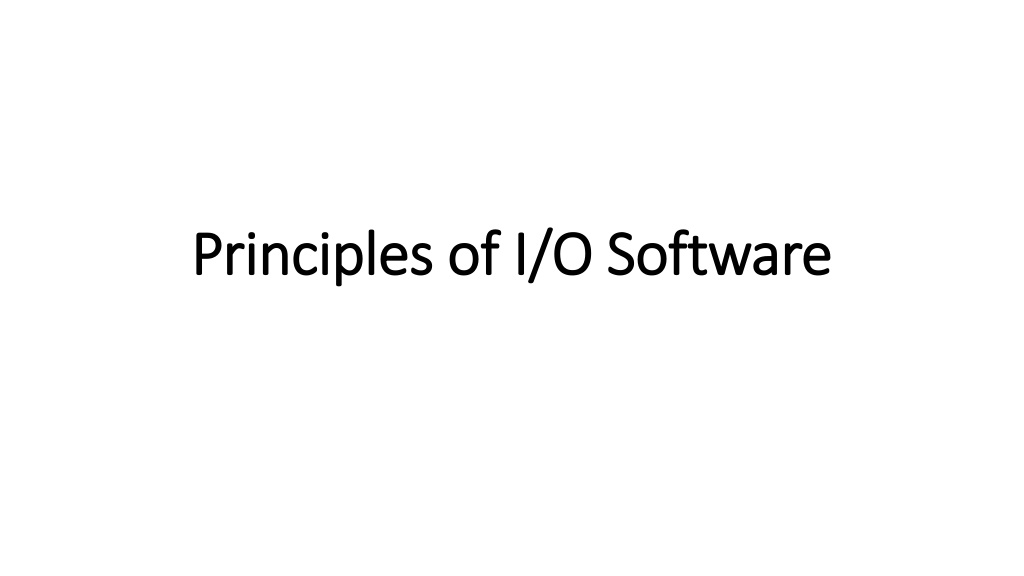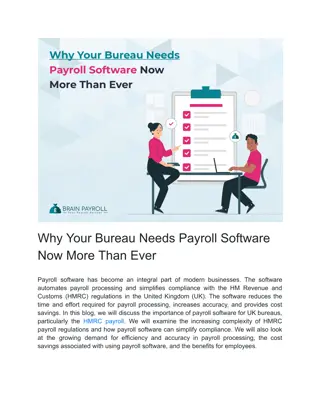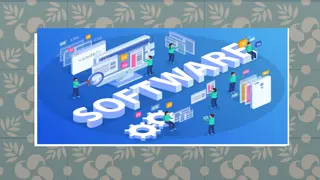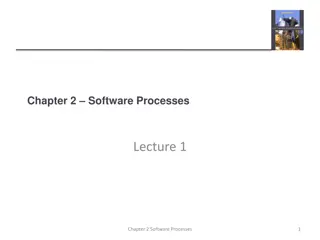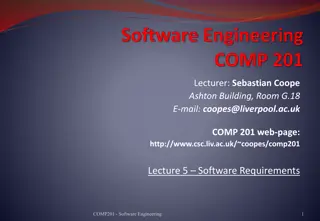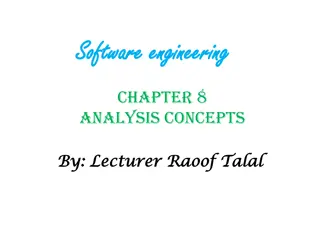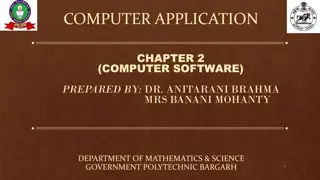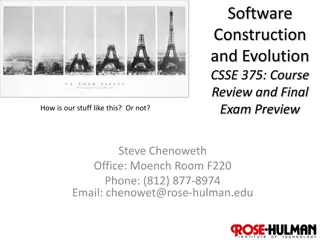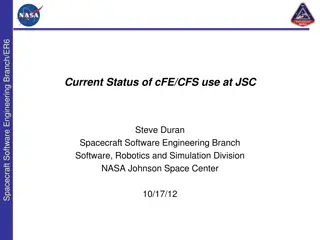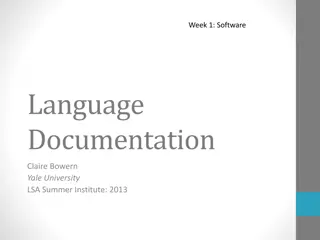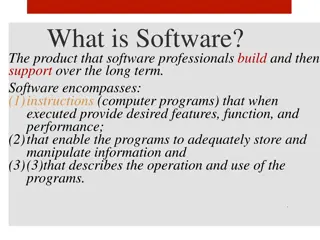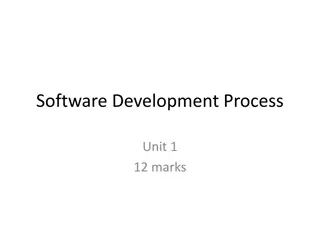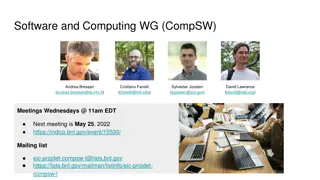Principles and Goals of I/O Software Explained
This informative content discusses the principles and goals of I/O software, including device independence, uniform naming, error handling, synchronous vs asynchronous operations, and buffering. It emphasizes the importance of writing programs that can access any I/O device without specifying the device in advance, ensuring uniform naming conventions, handling errors efficiently, and managing data buffering effectively in I/O operations. The text also touches upon the layers of the I/O software system.
Download Presentation

Please find below an Image/Link to download the presentation.
The content on the website is provided AS IS for your information and personal use only. It may not be sold, licensed, or shared on other websites without obtaining consent from the author.If you encounter any issues during the download, it is possible that the publisher has removed the file from their server.
You are allowed to download the files provided on this website for personal or commercial use, subject to the condition that they are used lawfully. All files are the property of their respective owners.
The content on the website is provided AS IS for your information and personal use only. It may not be sold, licensed, or shared on other websites without obtaining consent from the author.
E N D
Presentation Transcript
Principles of I/O Software Principles of I/O Software
Goals of the I/O Software Goals of the I/O Software Device independence Uniform naming Error handling Synchronous (blocking) versus Asynchronous (interrupt-driven) Buffering Ali Akbar Mohammadi 2
Device independence Device independence It should be possible to write programs that can access any I/O device without having to specify the device in advance. Ali Akbar Mohammadi 3
Uniform naming Uniform naming Uniform naming: The name of a file or a device should simply be a string or an integer and not depend on the device in any way. Ali Akbar Mohammadi 4
Error handling Error handling Errors should be handled as close to the hardware as possible. Only if the lower layers are not able to deal with the problem should the upper layers be told about it. Ali Akbar Mohammadi 5
Synchronous (blocking) versus Asynchronous Synchronous (blocking) versus Asynchronous (interrupt (interrupt- -driven) driven) Most physical I/O is asynchronous, the CPU starts the transfer and goes off to do something else until the interrupt arrives. User programs are much easier to write if the I/O operations are blocking after a receive system call the program is automatically suspended until the data are available in the buffer. It is up to the operating system to make operations that are actually interrupt-driven look blocking to the user programs. Ali Akbar Mohammadi 6
Buffering Buffering Often data that come off a device cannot be stored directly in its final destination. For example, when a packet comes in off the network, the operating system does not know where to put it until it has stored the packet somewhere and examined it. Ali Akbar Mohammadi 7
Layers of the I/O Software System Layers of the I/O Software System Ali Akbar Mohammadi 8
Interrupt Handlers Interrupt Handlers The best way to hide Interrupts is to have the driver starting an I/O operation block until the I/O has completed and the interrupt occurs. The driver can block itself by doing a down on a semaphore, a wait on a condition variable, a receive on a message, or something similar, for example. Ali Akbar Mohammadi 9
Device Drivers Device Drivers Each I/O device attached to a computer needs some device-specific code for controlling it. This code, called the device driver, is generally written by the device's manufacturer and delivered along with the device on a CD-ROM. Since each operating system needs its own drivers, device manufacturers commonly supply drivers for several popular operating systems. Ali Akbar Mohammadi 10
Device Drivers on Block & Character Devices Device Drivers on Block & Character Devices As we mentioned earlier, operating systems usually classify drivers as block devices, such as disks, or character devices, such as keyboards and printers. Most operating systems define a standard interface that all block drivers must support and a second standard interface that all character drivers must support. These interfaces consist of a number of procedures that the rest of the operating system can call to get the driver to do work for it. Ali Akbar Mohammadi 11
Device Device- -Independent I/O Software Independent I/O Software Although some of the I/O software is device specific, a large fraction of it is device independent. Ali Akbar Mohammadi 12
Functions of the Device Functions of the Device- -Independent I/O Software Independent I/O Software Ali Akbar Mohammadi 13
Uniform Interfacing for Device Drivers Uniform Interfacing for Device Drivers A major issue in an operating system is how to make all I/O devices and drivers look more-or-less the same. If disks, printers, monitors, keyboards, etc., are all interfaced in different ways, every time a new peripheral device comes along, the operating system must be modified for the new device. With a standard interface it is much easier to plug in a new driver, providing it conforms to the driver interface. It also means that driver writers know what is expected of them. Ali Akbar Mohammadi 14
(a) Without a Standard Driver Interface. (a) Without a Standard Driver Interface. (b) With a Standard Driver Interface. (b) With a Standard Driver Interface. Ali Akbar Mohammadi 15
Buffering Buffering Buffering is also an issue for both block and character devices. For block devices, the hardware generally insists upon reading and writing entire blocks at once, but user processes are free to read and write in arbitrary units. If a user process writes half a block, the operating system will normally keep the data around internally until the rest of the data are written, at which time the block can go out to the disk. For character devices, users can write data to the system faster than it can be output, necessitating buffering. Keyboard input that arrives before it is needed also requires buffering. Ali Akbar Mohammadi 16
Error Reporting Error Reporting Errors are far more common in the context of I/O than in any other context. When they occur, the operating system must handle them as best it can. Many errors are device-specific, so only the driver knows what to do (e.g., retry, ignore, or panic). A typical error is caused by a disk block that has been damaged and cannot be read any more. After the driver has tried to read the lock a certain number of times, it gives up and informs the device- independent software. How the error is treated from here on is device independent. If the error occurred while reading a user file, it may be sufficient to report the error back to the caller. Ali Akbar Mohammadi 17
Allocating and Releasing Dedicated Devices Allocating and Releasing Dedicated Devices Some devices, such as CD-ROM recorders, can be used only by a single process at any given moment. It is up to the operating system to examine requests for device usage and accept or reject them, depending on whether the requested device is available or not. A simple way to handle these requests is to require processes to perform opens on the special files for devices directly. If the device is unavailable, the open fails. Closing such a dedicated device then releases it. Ali Akbar Mohammadi 18
Device Device- -Independent Block Size Independent Block Size Not all disks have the same sector size. It is up to the device- independent software to hide this fact and provide a uniform block size to higher layers, for example, by treating several sectors as a single logical block. In this way, the higher layers only deal with abstract devices that all use the same logical block size, independent of the physical sector size. Similarly, some character devices deliver their data one byte at a time (e.g., modems), while others deliver theirs in larger units (e.g., network interfaces). These differences may also be hidden. Ali Akbar Mohammadi 19
User User- -Space I/O Software Space I/O Software Ali Akbar Mohammadi 20
